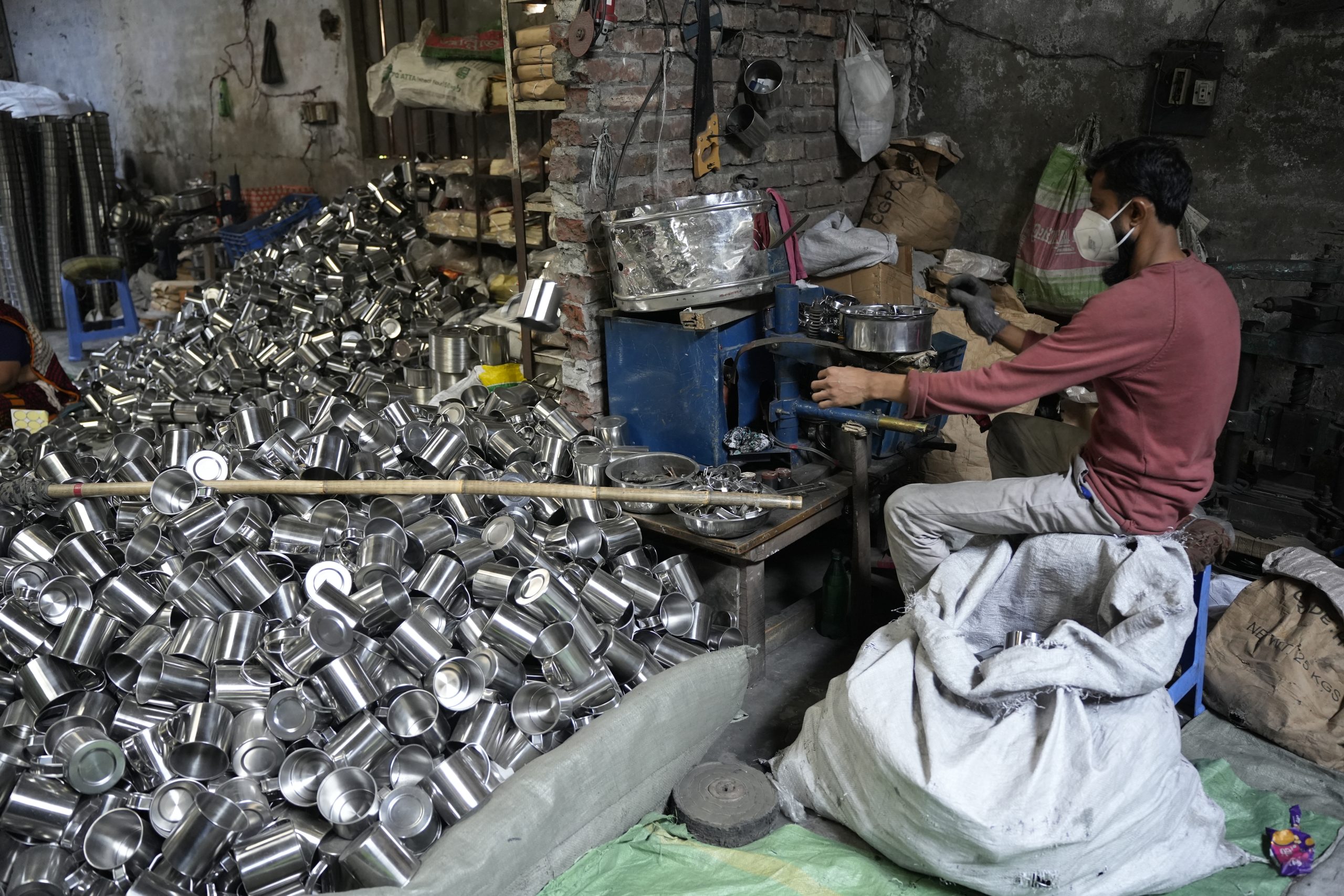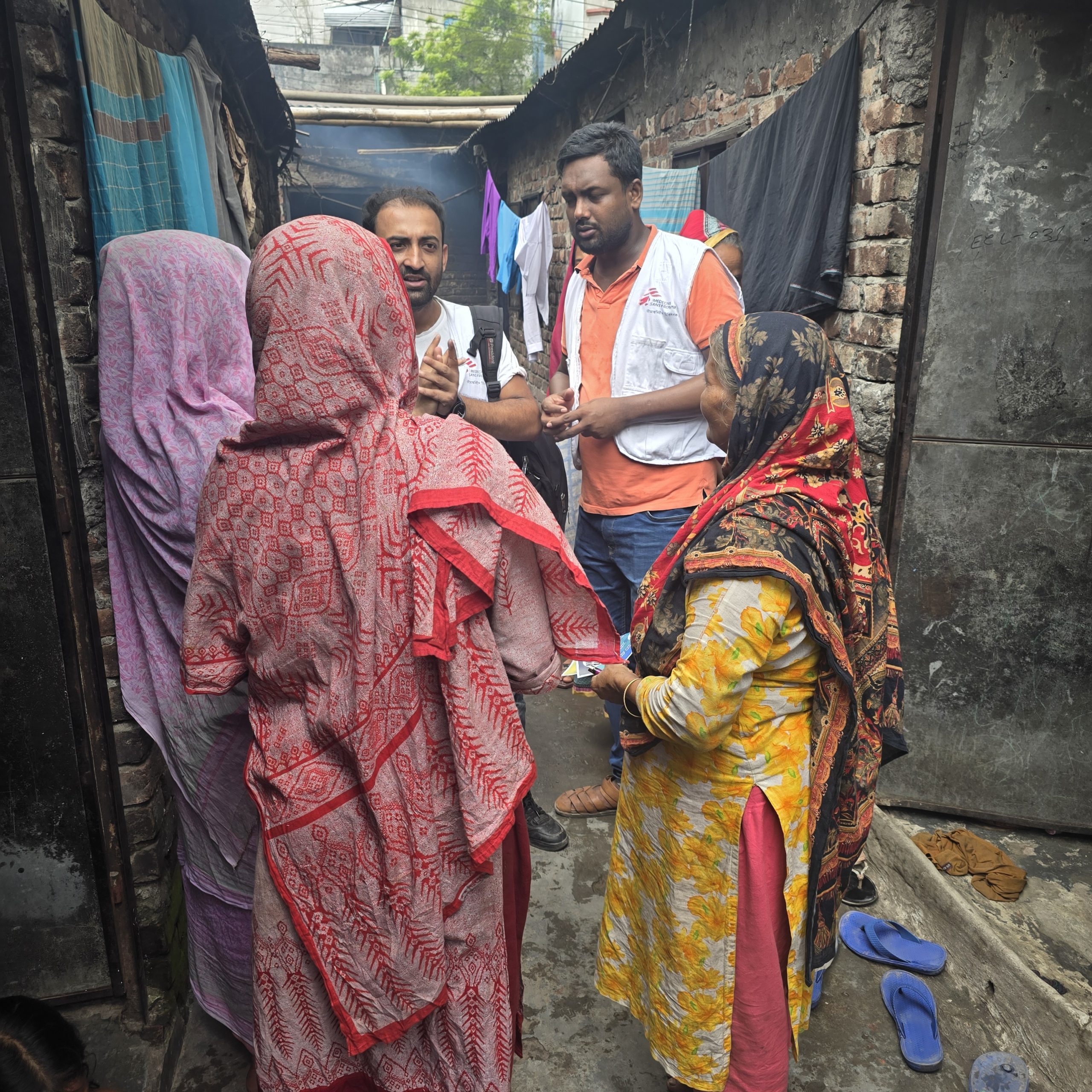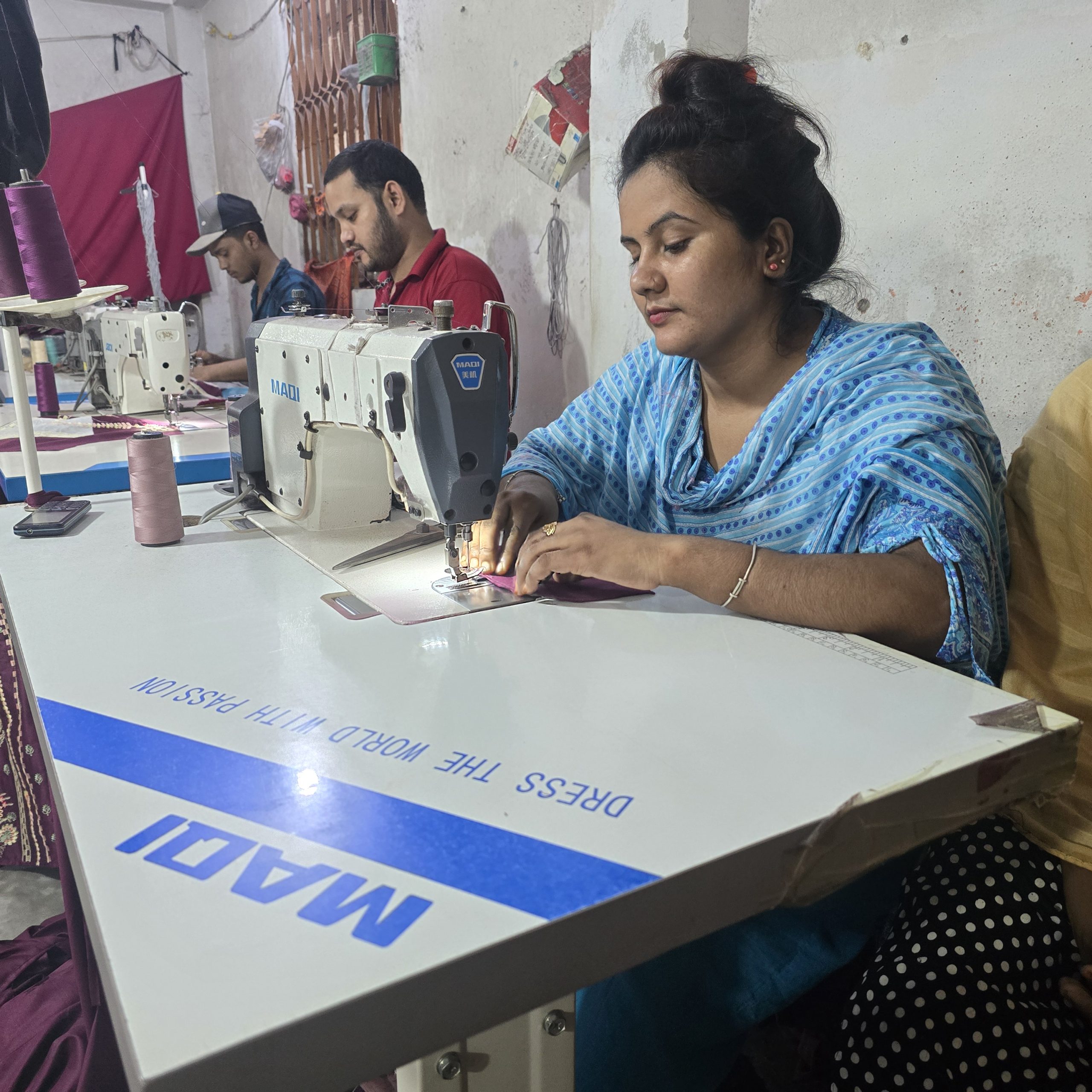Kamrangirchar, Bangladesh– The air in Kamrangirchar hangs thick with dust and the clang of machinery. Located in Bangladesh, southeast Asia, just across the river from Dhaka’s towering skyline, this four-square-kilometer enclave is a world unto itself. Here, in the labyrinth of makeshift factories, hundreds of thousands of people labor in the shadows, their lives a stark counterpoint to the city’s relentless energy.
Occupational Health care
Behind the blue gates and down narrow, alleys, a hidden world of sweatshops thrives. Over 10,000 unregulated factories—crammed into basements, perched on rooftops, squeezed into single rooms—churn out goods for the domestic market. Men, women, and even children endure grueling hours in hazardous conditions, their families their only safety net when illness or injury strikes.
Hanif, 29, has spent a decade in a metal cabinet factory, his hands calloused and scarred. “If I get sick, I don’t get paid, but I keep my job,” he says, displaying the jagged marks that tell tales of past accidents. Like many, he’s paid by piece rate, his income fluctuating with his output. A bad injury can devastate his family, plunging them into deeper poverty. “Every time I have gone to Médecins Sans Frontières’ clinic and received care there. It has been very good because you get help quickly, and it doesn’t cost anything,” says Hanif, his gratitude palpable.


The clinic opened in 2009, initially addressing the rampant malnutrition among children and evolving to tackle the most pressing needs: occupational health, sexual and reproductive health, and support for survivors of gender-based violence. They navigate the complex realities of this forgotten corner of Dhaka, where the lines between survival and despair are often blurred.
The impact is far-reaching, rippling through families and communities. Housna Ara, 39, sews tunics for ten hours a day, her body aching, her eyes burning. “I have to work, or we won’t eat,” she says, tears welling as she describes supporting her ailing father. Her fading eyesight, a direct consequence of her work, threatens her livelihood, the last fragile thread of her safety net.
Children, too, are trapped in this relentless cycle. Robin, 15, and his 13-year-old brother are the sole breadwinners for their family, their childhoods stolen by necessity. Suma, also 15, works twelve-hour days in a textile factory, her dreams of school and a better life overshadowed by the immediate need to survive.
The clinic was nestled in the heart of Kamrangirchar. From first aid training to vaccinations and mental health support, it addressed the multifaceted needs of the community, understanding that health is inextricably linked to economic stability and social well-being.
Sexual and gender– based violence care
The clinic provided care to women in Kamrangirchar facing the hard reality of sexual and gender-based violence (SGBV). Initially, reaching these women meant overcoming deep-seated stigmas and actively seeking them out in their homes and workplaces. “We’ve witnessed a profound shift in the community’s awareness and willingness to seek help”, says Gazi Farzana Srabony, Mental health Activity Manager of Kamrangirchar.
“We’ve seen firsthand the impact of accessible services; and we are hopeful that other organizations will continue to build on what we’ve started,” says Gazi Farzana.


More support needed
The challenges in Kamrangirchar are immense. The sheer number of factories, the continuous influx of new laborers, and systemic issues mean that the impact of MSF’s interventions, while valuable, was limited in scale. We provided essential support, like first aid and safety training, which offered crucial relief in a community where survival is a daily struggle.
With the handover of the decade long program, local staff, organizations and authorities plan to do their best to ensure that these workers continue to receive this necessary assistance.
Due to a global review and financial reprioritization, after more than a decade working in partnership with the community in Kamrangirchar, by the end of March 2025, MSF handed over its Kamrangirchar projects.
In Kamrangirchar, MSF provided medical services through clinics in Ali nagar and Madbor Bazar, supported the 31-bed government hospital with staff and resources, and conducted outreach to improve healthcare access and occupational health awareness in local factories.
Elsewhere in Bangladesh, MSF remains present in the Cox’s Bazar district which hosts Rohingya refugees who’ve fled targeted violence in neighbouring Myanmar’s Rakhine state since 1978. An estimated more than 1 million Rohingya are confined in the camps in Cox’s Bazar district, where they arrived after fleeing violence in nearby Myanmar. This includes another estimated more than 60,000 people that have arrived since January 2024 after renewed clashes between armed groups in Myanmar.
The current intervention in Cox’s Bazar started in 2009, when Kutupalong Field Hospital was established to serve both refugees and the local community. In August 2017, we scaled up activities and now run nine health facilities across Cox’s Bazar district, including three hospitals, three primary health centres and two specialised clinics.
-
Related:
- Bangladesh
- MSF in Bangladesh
- Public Health
- SGBV












